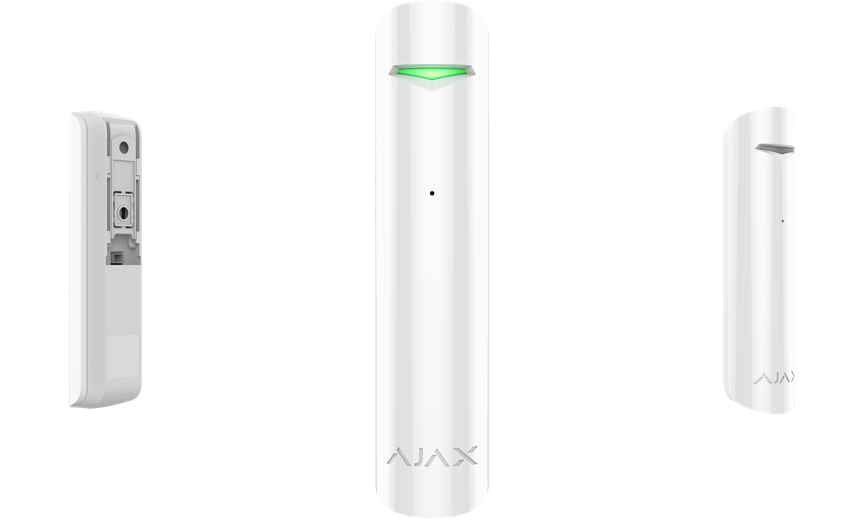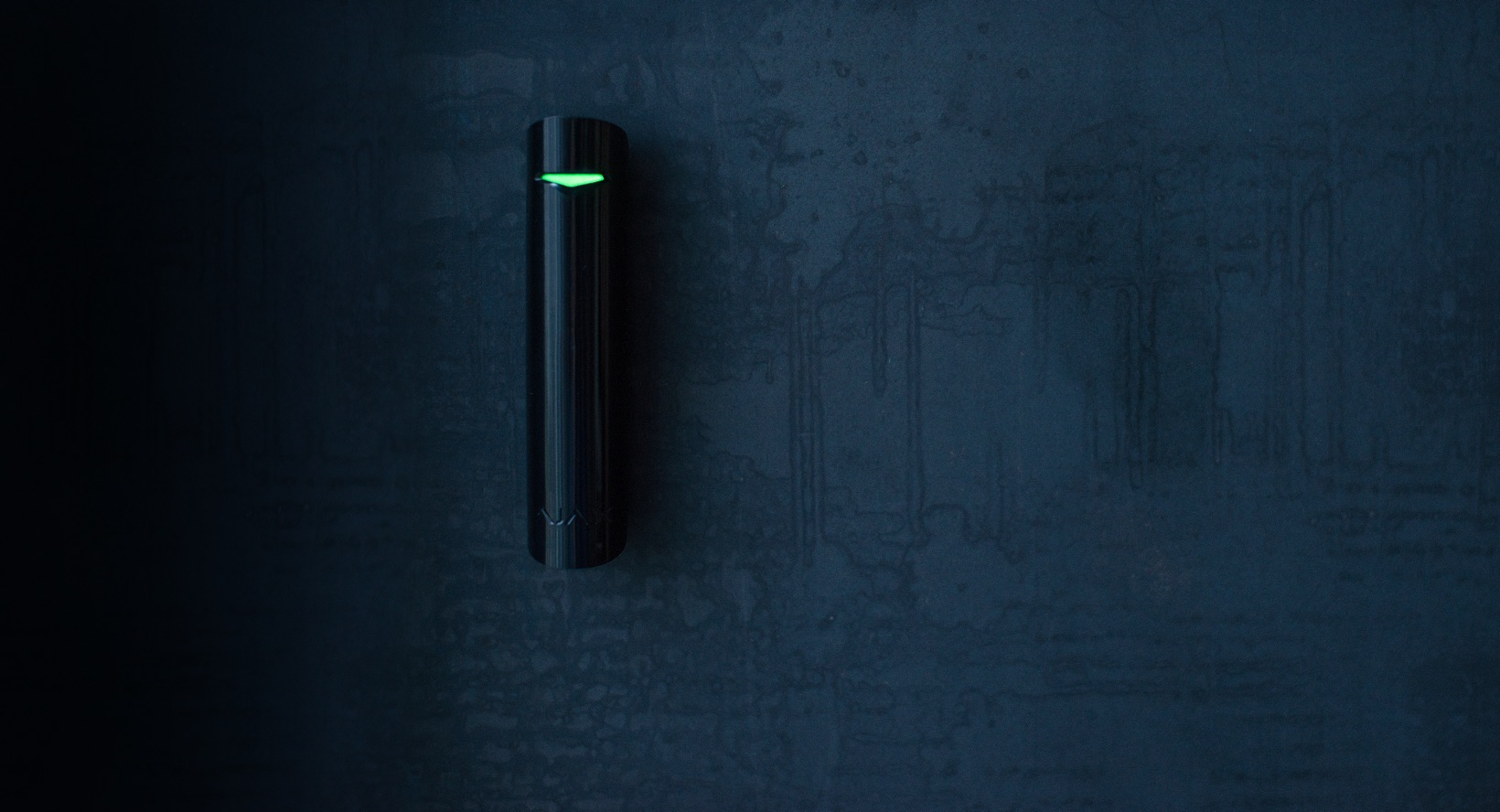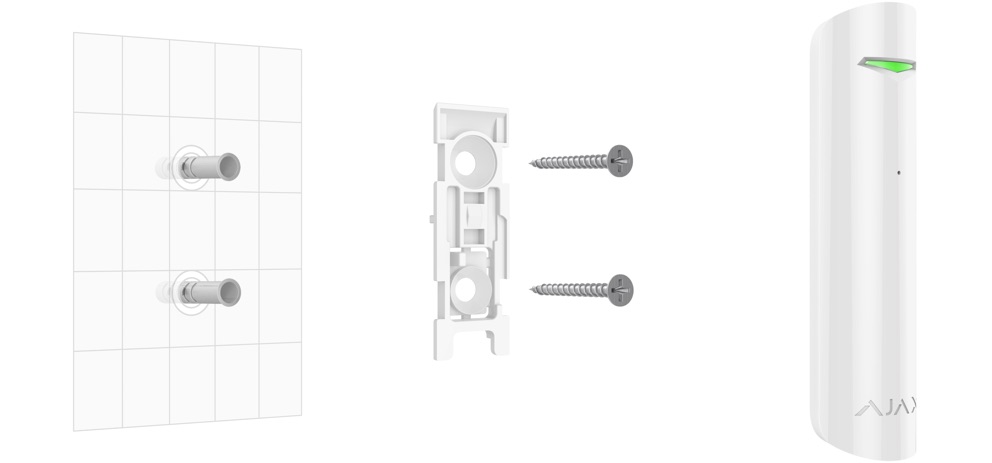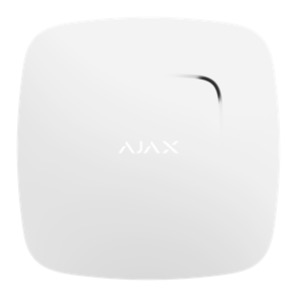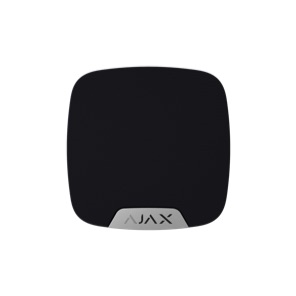GlassProtect Jeweller
A miniature wireless detector recognizing glass breaking from up to 9 meters. If intruders break a window, the system immediately notifies users and a security company. At the same time, a passing cars, thunder, and barking dogs do not cause false alarms.
-
Security Grade
-
Compliance
Operates up to 7 years without battery replacement
Ignores thunder, dogs barking and noise outside the window
Detects breakage at a distance of up to 9 m
Principle of operation
Detects broken glass using an electret microphone, which registers the sound of impact against the glass and of the glass falling.
Features
Two-factor detection of broken glass prevents false alarms caused by thunder, dogs barking and noise from passing trucks.
Installation and set up
Ready to operate straight out the box: the battery is already installed, therefore there is no need to disassemble the detector. With one click, it can be connected to the hub in the mobile application. It can be mounted on the SmartBracket in just a few minutes.
Principle of operation
Detects broken glass using an electret microphone, which registers the sound of impact against the glass and of the glass falling.
Features
Two-factor detection of broken glass prevents false alarms caused by thunder, dogs barking and noise from passing trucks.
Installation and set up
Ready to operate straight out the box: the battery is already installed, therefore there is no need to disassemble the detector. With one click, it can be connected to the hub in the mobile application. It can be mounted on the SmartBracket in just a few minutes.
Tech specs
Classification
Surface sound radio channel security detector
Type of detector
Wireless
Installation method
Indoors
Compatibility
Sensing element
Electret microphone
Break detection distance
Up to 9 m
Alarm signal delivery time
0.15 s
Sensitivity
Adjustable, 3 levels
Detection angle
180°
Power supply
Battery: CR123A battery, 3 V
Battery life
Jeweller radio technology
Communication range with central unit — up to 1,000 m in an open space
Two-way communication between devices
Radio frequency bands:
866.0 – 866.5 MHz
868.0 – 868.6 MHz
868.7 – 869.2 MHz
905.0 – 926.5 MHz
915.85 – 926.5 MHz
921.0 – 922.0 MHz
(depends on the region of sale)
Self-adjusting RF output power — up to 20 mW
Block encryption based on AES algorithm
Detector polling period — 12−300 s
Learn more about Jeweller
Two-way communication between devices
Radio frequency bands:
866.0 – 866.5 MHz
868.0 – 868.6 MHz
868.7 – 869.2 MHz
905.0 – 926.5 MHz
915.85 – 926.5 MHz
921.0 – 922.0 MHz
(depends on the region of sale)
Self-adjusting RF output power — up to 20 mW
Block encryption based on AES algorithm
Detector polling period — 12−300 s
Learn more about Jeweller
Temperature sensor
Available
Operating temperature range
+5°С to +40°С
Permissible humidity
Up to 75%
Anti-sabotage
Protection against fraud
Jamming detection
Tamper-resistant
Jamming detection
Tamper-resistant
Remote setting and testing
+
Dimensions
Diameter: 20 mm
Height: 90 mm
Height: 90 mm
Weight
30 g
Warranty
Replacement and repair within 24 months of the date of sale. Batteries are not covered under warranty.
Complete set
GlassProtect glass break detector
SmartBracket mounting panel
CR123A battery (pre-installed)
External contact
Installation set
User's guide
SmartBracket mounting panel
CR123A battery (pre-installed)
External contact
Installation set
User's guide
Choose the most suitable Ajax set in 2 minutes
Tell us what you need to protect and we will put together a set of detectors and devices for your premises.
Start
Recommended products
Wireless glass break detector for alarm system Ajax GlassProtect
The security system is designed to protect the territory from fires, leaks and intrusions. Appropriate detectors for each type of threat help prevent property damage and secure the premises. The glass breakage sensor is one such device. Glass breakage sensors are used indoors and signal burglary after the corresponding sound is recorded. Glass break detectors are installed in private premises, shops, offices, etc. Before installing a glass break detector, users should familiarize themselves with the types and features of the devices.Classification of glass break sensors
According to the principle of work:- Piezoelectric glass break sensors — react to mechanical impact. Annunciators activate oscillations in the glass sheet after impact. There are two types of piezoelectric sensors.
- Electrocontact glass break sensors — determine the integrity of the glass by mechanical control. An electrocontact type sensor is presented in the form of a thin wire in a fragile sheath or in the form of a wide strip of metal foil, which is coated with a lacquer dielectric. An electric current is passed through the conductor. When the glass surface is broken, the conductive element breaks. This technology is rarely used due to a number of disadvantages:
- Labour-intensive installation of fragile elements and the impossibility of their connection in the event of an accidental break, even by soldering.
- Not an aesthetic appearance and excessive attraction of the attention of intruders. Glass can be cut without touching the wires.
- Acoustic glass break detectors — react to the sound characteristic of broken glass. Sound sensors activate an alarm if they detect acoustic waves in the spectrum characteristic of broken glass.
- High speed of response to the pathogen and recognition accuracy.
- Wide range of settings and high sensitivity.
- Convenient installation and connection. Indoor installation on walls or ceiling.
Features of acoustic glass break sensors
Device activation algorithm:- The sound sensor microphone receives acoustic vibrations and converts them into an electrical signal.
- The sound sensor actuators can generate several signal types depending on the model.
- Depending on the model, the sound sensor actuators can generate several signal types
Device selection and installation options
Users need to pay attention to the monitored glass sheet type, size, and thickness when choosing a sound-type glass break sensor. Most of the models are universal devices, in memory of which there is information about the most common types of glass in construction. The acoustic sensor can work with 2.5-8 mm glasses.Please note that separate settings or specific sensor models are required for reinforced or laminated glass.Power type. There are glass break sensors with an autonomous power source and connection to the alarm system loops. Such devices operate from 8-30 V. Wired break sensors must be installed in the interior at the design stage to install the power cable. Effective sensing distance. Users should not place the device at the maximum distance indicated by the manufacturer in the instructions since, in this case, the sensor sensitivity works at its full, and more energy is consumed. Glass break sensors are recommended to be mounted on walls or other load-bearing structures that are not subject to vibration at the height of up to 2 m. Such an arrangement of the device will prevent obstruction of the signal of the glass break detector by third-party objects and its unauthorized dismantling. When installing the device, users need to consider the presence of protective films, curtains, blinds and other elements on the glass. They can distort or make the breaking sound weak. An essential function of the glass break sensor is anti-masking, preventing sensitive sensors from being blocked.
